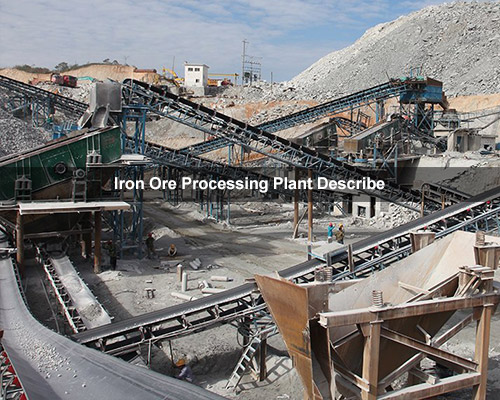Iron Ore Processing Plant Describe
Introduction
Iron ore processing plants play a crucial role in transforming raw iron ore into high-quality steel-making feedstock. With advancements in mineral processing technology, modern plants optimize efficiency, reduce waste, and enhance sustainability. This article explores key stages of iron ore processing, including crushing, grinding, beneficiation, and pelletizing, along with the latest innovations driving industry standards.
Key Stages of Iron Ore Processing
1. Crushing and Grinding
The first step involves reducing large chunks of iron ore into smaller particles. Primary crushing with jaw crushers and secondary crushing with cone or impact crushers ensure optimal feed size for grinding. Advanced methods like “blasting-to-replace-crushing” and “crushing-to-replace-grinding” improve efficiency—some plants achieve 92% pre-grinding fineness, boosting mill throughput.
2. Beneficiation (Magnetic Separation & Flotation)
Low-grade iron ore requires beneficiation to remove impurities like silica and alumina. Techniques include:
- Magnetic separation for magnetite ores
- Gravity separation or flotation for hematite/goethite ores
Leading plants maintain 66.36% Fe content with 99.21% product consistency by integrating AI-driven ore sorting and real-time quality control.
3. Pelletizing and Sintering
Pelletizing (using binders like bentonite) and sintering (agglomeration) enhance blast furnace efficiency. Top-tier plants achieve:
- <0.31% equipment downtime via predictive maintenance
- 3.81% higher production rates through optimized “1+2+N” maintenance models
Cutting-Edge Technologies
- Smart Mining: Digital twin models and IoT-enabled devices refine ore tracking and blending.
- Carbon-Neutral Processing: Electrification and hydrogen-based reduction pilot projects.
- Circular Economy: Reprocessing tailings to recover residual iron and reduce waste.
Conclusion
Modern iron ore processing plants prioritize cost-efficiency, automation, and sustainability—critical for meeting global steel demand. Investments in R&D (e.g., $20M annual tech upgrades) ensure competitiveness amid rising ore quality standards.

